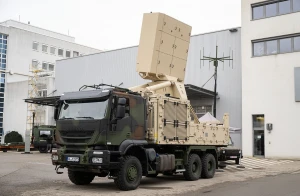
G7 discusses possibility of loan for Ukraine against proceeds of frozen Russian assets
On May 24, a meeting of the G7 finance ministers began in Stresa, Italy, to discuss the possibility of granting Ukraine a loan guaranteed by the proceeds of Russian assets frozen due to the full-scale war
This is reported by Reuters.
US Treasury Secretary Janet Yellen said that the loan could be about $50 billion, but the amount has not been agreed upon.
Other negotiators were cautious, citing the complexity of the legal and technical aspects.
"With great difficulty we have found a compromise for the use of the interest (already accrued)," Italian Economy Minister Giancarlo Giorgetti told reporters.
Giorgetti noted that the problem is what legal basis for this can be used in relation to future profits. He added that the decision "will not be easy," and several central banks have expressed reservations about the US proposal.
An unnamed European official said that the communiqué at the end of the meeting would likely contain a loan agreement in general, but without details.
"I don't think there will be any numbers," the official said when asked about the $50 billion figure.
Another European official suggested that there would be no decisions on this issue in Stresa.
German Finance Minister Christian Lindner said that many questions remain open and he does not expect any specific decision to be made following the Stresa meeting.
In that case, officials will continue negotiations to make progress until the G7 heads of government meet in the southern Italian region of Puglia on June 13-15.
The day before, on May 23, Yellen said at a press conference that she expected "general agreement on the concept" of using proceeds from Russian assets to provide Ukraine with significant financial support after 2025.
The publication notes that the key condition for the EU countries, where most of the assets are kept, is the non-confiscation of the principal amount of assets and the use of only the income from them.
Giorgetti suggested that a loan secured by future income from frozen assets would lead to retaliation by Russia and emphasized that any agreement should have a "solid legal basis," thus echoing what Japanese Finance Minister Shun'ichi Suzuki said.
According to the publication, the proposal being considered by the G7 envisages a one-time loan to Ukraine, and the funds may be provided directly, rather than through a global financial institution such as the World Bank.
What is known about the frozen Russian assets
On November 30, the US Senate introduced a bill to confiscate Russian assets. By January 11, the Biden administration backed the idea, supporting the transfer of Russian Federation assets to Ukraine.
Russia warned that confiscating its frozen assets could cost the West at least $288 billion in lost assets and investments. Moscow also threatened retaliation.
On January 23, Belgium's ambassador to the US stated that Western countries should collectively decide on confiscating frozen Russian assets, most of which are held in Brussels' Euroclear.
The next day, the US Senate committee approved a bill to confiscate Russian assets and transfer them to Ukraine.
By January 30, the Committee on Political Affairs of the Parliamentary Assembly of the Council of Europe adopted a draft resolution to confiscate frozen Russian assets and allocate them to a fund for Ukraine's restoration.
Europe holds €191 billion of Russia's €260 billion in frozen foreign assets. The €4.4 billion profit from these assets in 2023 is intended for Ukraine.
On February 12, the Council of the EU decided on a mechanism to use profits from frozen Russian assets in the EU for Ukraine.
On May 7, German Chancellor Olaf Scholz supported using about 90% of profits from frozen Russian assets for Ukraine's defense needs.
Finally, on May 8, EU ambassadors agreed to direct revenues from frozen Russian assets to Ukraine’s reconstruction and defense against the aggressor.
- News













































